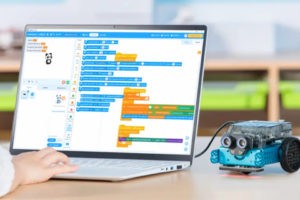The Future of Building Automation: Why control networking technologies face an uncertain future

The building automation industry supports a number of rival control networking technologies. They can be used to connect and control diverse types of devices and appliances made by many different manufacturers. Does the IoT threaten the future of building automation the way we know it?
BACnet and KNX are standard technologies, each backed by an independent industry alliance. They maintain the specifications and regulate interoperability and conformance testing. LONworks is also an industry standard supported in products from many different manufacturers; it was originally developed by the Echelon corporation. All three control networking platforms have features and characteristics that make them suitable for use in building automation systems. Over any one of BACnet, KNX or LONworks, sensors such as thermostats, proximity sensors and smoke detectors can provide data inputs. Devices such as boilers, lights and fire alarms can use the data to switch on and off automatically. But will that remain the future of building automation?
It might not be ideal for building owners and facilities managers that these three and other control networking technologies continue to exist. However, a single dominant industry standard has not emerged. The computer industry, after all, has thrived on the basis of using only one networking technology worldwide. Ethernet connects all the PCs, servers, switches and routers in offices.
The building automation industry might also wish for the control networking technologies to be more intuitive. To require fewer and simpler controllers and gateways, and to need less intensive training for installers and operators.
Nevertheless, control networking has enabled a far greater degree of automation of building operations today than was possible 20 or 30 years ago. So why would the industry want to look to technologies beyond the likes of BACnet, KNX and LONworks?
Does the future of building automation lie in the Internet of Things (IoT)?
The traditional building control networks are designed to be stand-alone systems. All the sensing, control and monitoring functions are performed by devices connected to the main control network.
This closed architecture does not easily allow for internet-based functions to be supported. The IoT is the complete opposite: it involves connecting all devices to the world’s single, universal network, through which any device or ‘thing’ can communicate with any other connected and discoverable thing. And history suggests that, once a technology platform begins to support internet connectivity, users want more and more of it.
It is easy to forget that there was a time when home and office PCs were not connected to the internet. Likewise, in the early days mobile phones were confined to a mobile phone-only platform (for most, this was the GSM 2G network). Now all 4G mobile phones are permanently connected to the internet, and users have found thousands of uses for the phone as an internet device, as well as a voice-call appliance.
So it will be with devices and appliances in buildings once the IoT has been widely adopted. Just as with the PC and the mobile phone, so too with building appliances we cannot possibly foresee all the uses of internet connectivity in building automation, and the apps that the IoT will support.
Remote monitoring of building operations from any web browser seems likely to be one. Keyless access control, to open doors with a smartphone app, is another.
The IoT has the potential to turn building automation business models upside down
But the real point is that the IoT will liberate the imagination of developers, operators and users of building automation systems to invent new use cases and new device functions.
It will also raise the question of how to make every thermostat, fan and smoke alarm a node in the IoT while retaining core building control functionality. BACnet, KNX and LONworks were certainly not designed for internet connectivity.
However, with the ongoing boom of the Internet of Things, don’t we need a new kind of thinking, a new approach? How about single, simple language in which all devices and appliances in a building can talk directly to one another? Some kind of Operating System on the smallests of devices? A system, that would take the complexity out building automation installations?
Speaking of an uncertain future: if we learned one thing from the Internet of Things, than its ability to disprupt old business models. And it happened in many industries already. Probably, Building Automation is next.









